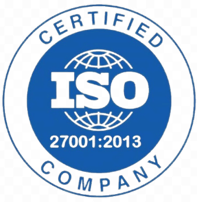How to Gain Control of Your Physical Security Devices
Today’s physical security professionals have good reason to feel like they’re stuck between a rock and a hard place, lacking control over the connected devices on which they depend. On the one hand, they understand that properly managing all of their physical security devices is a massive task – and likely too time-consuming to be feasible. But on the other hand, they know they need to steer clear of the risks that can stem from inadequately managed physical security devices.
Given the tough spot in which this lack of control leaves physical security teams, some organizations have started to use point solutions to automate parts of the management of their physical security devices. But while those solutions may provide some significant benefits, the visibility and automation they offer organizations is too narrow to enable those organizations to gain sufficient control of their physical security device management.
Instead, what organizations need is a consolidated approach to managing all of their physical security devices – seamlessly integrating powerful automated capabilities with comprehensive, real-time visibility into the health and status of their devices. This way, organizations can gain the control they need over all of their connected physical security devices.
To help organizations gain control of the management of their physical security devices, we recently published a new eBook, From Chaos to Control: A Guide to Consolidated Device Management.
Download it to learn:
- Why do today’s challenges make it so critical to gain control of your physical security devices?
- How can you gain the control you need by consolidating your physical security device management?
- What are the four essential requirements for consolidation, and how can you meet each of them?
- As you consolidate the management of your physical security devices, how can you foster much-needed collaboration and achieve enterprise-ready physical security?
Why consolidated physical security device management is so important
When organizations don’t manage their physical security devices adequately, they risk facing a variety of dangers and needlessly high costs. The four main pitfalls that organizations need to steer clear of are:
- Device downtime, given the risk that their devices will stop working properly and it will take their team a long time to even notice the problem – compromising their physical security.
- Cybercrime, given the risk of bad actors hacking into their physical security devices – potentially leading to a costly data breach.
- Noncompliance, given the risk that organizations will inadvertently fail to adhere to their own IT policies, relevant laws and regulations, or both.
- Excessively high expenses, given that inadequately managed physical security devices are more likely to have technical issues, which many organizations address through costly on-site maintenance.
By providing organizations with the visibility and the automated tools they need, consolidated physical security device management helps them avoid all four of these pitfalls. Since this kind of approach includes round-the-clock monitoring of devices and their ecosystems, it helps organizations ensure that they know when their devices have downtime or other operational issues, or when they’re showing signs that they might be compromised or vulnerable to cybercriminals. And by streamlining key hardening and maintenance processes such as firmware upgrades and password rotations, it helps organizations keep hackers from infiltrating their physical security devices.
At the same time, a consolidated approach to managing physical security devices helps organizations ensure that their devices stay compliant with legal requirements and their own standards and policies. While providing enhanced visibility that helps organizations identify possible issues they need to address, consolidation also helps them make sure that maintenance steps are automatically performed in line with their own specifications.
And when operational issues do arise, consolidated physical security device management can help organizations resolve them automatically, remotely, and (when relevant) in bulk. Among other cost-saving benefits, this approach can eliminate the need for 70% of truck rolls by letting organizations restart their devices remotely. This way, organizations can minimize the amount of money required to keep their physical security devices running reliably and securely.
To learn how to gain control of the management of your organization’s physical security devices, download From Chaos to Control: A Guide to Consolidated Device Management.



